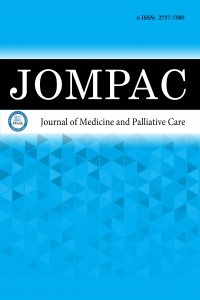1.
Scales CD Jr, Smith AC, Hanley JM, Saigal CS, Urologic diseases in America P. Prevalence of kidney stones in the United States. <em>Eur Urol.</em> 2012;62(1):160-165.
2.
Worcester EM, Coe FL. Clinical practice. Calcium kidney stones. <em>N Engl J Med.</em> 2010;363(10):954-963.
3.
Kusumi K, Becknell B, Schwaderer A. Trends in pediatric urolithiasis: patient characteristics, associated diagnoses, and financial burden. <em>Pediatr Nephrol.</em> 2015;30(5):805-810.
4.
Sharma AP, Filler G. Epidemiology of pediatric urolithiasis. <em>Indian J Urol.</em> 2010;26(4):516-522.
5.
Sas DJ, Hulsey TC, Shatat IF, Orak JK. Increasing incidence of kidney stones in children evaluated in the emergency department. <em>J Pediatr.</em> 2010;157(1):132-137.
6.
Fakheri RJ, Goldfarb DS. Ambient temperature as a contributor to kidney stone formation: implications of global warming. <em>Kidney Int.</em> 2011;79(11):1178-1185.
7.
Brikowski TH, Lotan Y, Pearle MS. Climate-related increase in the prevalence of urolithiasis in the United States. <em>Proc Natl Acad Sci.</em> 2008;105(28):9841-9846.
8.
Safarinejad MR. Adult urolithiasis in a population-based study in Iran: prevalence, incidence, and associated risk factors. <em>Urol Res.</em> 2007;35(2):73-82.
9.
Halbritter J, Baum M, Hynes AM, et al. Fourteen monogenic genes account for 15% of nephrolithiasis/nephrocalcinosis. <em>J Am Soc Nephrol.</em> 2015;26(3):543-551.
10.
Halbritter J, Seidel A, Muller L, Schonauer R, Hoppe B. Update on hereditary kidney stone disease and introduction of a new clinical patient registry in Germany. <em>Front Pediatr.</em> 2018;6:47
11.
Edvardsson VO, Ingvarsdottir SE, Palsson R, Indridason OS. Incidence of kidney stone disease in Icelandic children and adolescents from 1985 to 2013: results of a nationwide study. <em>Pediatr Nephrol.</em> 2018;33(8):1375-1384.
12.
Tasian GE, Ross ME, Song L, et al. Annual incidence of nephrolithiasis among children and adults in South Carolina from 1997 to 2012. <em>Clin J Am Soc Nephrol.</em> 2016;11(3):488-496.
13.
Rizvi SAH, Naqvi SAA, Hussain Z, et al. Pediatric urolithiasis: developing nation perspectives. <em>J. Urol.</em> 2002;168(4):1522-1525.
14.
Milliner DS, Murphy ME. Urolithiasis in pediatric patients. <em>Mayo Clin Proc.</em> 1993;68(3):241-248.
15.
Üntan İ, Üntan S, Tosun H, Demirci, D. Metabolic risk factors and the role of prophylaxis in pediatric urolithiasis. <em>J Pediatr Urol,</em> 2021;17(2):215-e1.
16.
Minevich E. Pediatric urolithiasis. <em>Pediatr. Clin.</em> 2001;48(6):1571-1585.
17.
Passas I. Bibliometric analysis: the main steps. <em>Encyclopedia</em>. 2024;4(2):1014-1025.
18.
Van Eck N, Waltman L. Software survey: VOSviewer, a computer program for bibliometric mapping. <em>Scientometrics.</em> 2010;84(2): 523-538.
19.
Khalil GM, Crawford CAG. A bibliometric analysis of US-based research on the behavioral risk factor surveillance system. <em>AJPM Focus.</em> 2015;48(1):50-57.
20.
Chen S, Zhang T, Zhang J, Current status and prospects of pediatric stone disease: a bibliometric and visualization study. <em>Cureus.</em> 2024;16(3):e56549.
21.
Ghidini F, Castagnetti M. Pediatric urology research in 2020: a bibliometric analysis of the top 100 most cited articles. <em>Urologia J</em>. 2022;89(3): 474-480.
22.
Matta R, Schaeffer AJ. The top 100 cited articles in pediatric urology: a bibliometric analysis. <em>J Pediatr Urol.</em> 2021;17(5): 709-e1.
23.
Pedroza VM, Solano C, Sierra MJ, et al. Cardiovascular risk and urolithiasis: underestimated or unknown relationship? <em>Insight Urology</em>. 2024;45(1):42-51.
24.
Zyoud SEH, Abushamma F, Salameh H, et al. Exploring the nutritional landscape and emerging trends in kidney stone research: visualization and bibliometric analysis. <em>Transl. Med. Commun.</em> 2024;9(1):8.
25.
Siener R, Metzner C. Dietary weight loss strategies for kidney stone patients. <em>WorldJ Urol</em>. 2023;41(5):1221-1228.
26.
Abushamma F, Zyoud, SEH. Analyzing global research trends and focal points in the utilization of laser techniques for the treatment of urolithiasis from 1978 to 2022: visualization and bibliometric analysis. <em>Urol.</em> 2024;52(1): 67.
27.
Dong C, Song C, He Z, et al. An overview of global research landscape in etiology of urolithiasis based on bibliometric analysis. <em>Urol.</em> 2023;51(1):71.
28.
Tan S, Yuan D., Su H, et al. Prevalence of urolithiasis in China: a systematic review and meta-analysis. <em>BJUInt</em>. 2024;133(1):34-43.
29.
Nedbal C, Cerrato C, Jahrreiss V, et al.Trends of “artificial ıntelligence, machine learning, virtual reality, and radiomics in urolithiasis” over the last 30 years (1994-2023) as published in the literature (PubMed): a comprehensive review. <em>J Endourol</em>. 2024;38(8): 788-798.
30.
Fernández N, Herrera DAV, Villanueva J, et al. Publication trends in pediatric stone disease: a bibliometric analysis. <em>Colomb Urol J.</em> 2022;31(03):e102-e108.
31.
Sun G, Liu C. Song C, et al. Knowledge mapping of UMOD of English published work from 1985 to 2022: a bibliometric analysis. <em>Int Urol Nephrol.</em> 2024;56(1):249-261.
32.
Wei N, Hu Y, Liu G, et al. A bibliometric analysis of familial hypercholesterolemia from 2011 to 2021. <em>Curr Probl Cardiol</em>. 2023;48(7):101151.
33.
Yuvanç E, Yilmaz E, Tuglu D, Batislam E. Medical and alternative therapies in urinary tract stone disease. <em>World J Nephrol</em>. 2015; 4(5):492-499.
34.
Juliebø-Jones P, Keller EX, Tzelves L, et al. Paediatric kidney stone surgery: state-of-the-art review. <em>Ther Adv Urol</em>, 2023;15: 17562872231159541.
35.
Beşer İ, Yuvanç E, Yılmaz E. The effectiveness of modified stone recurrence predictive score in predicting recurrence of urinary stone disease.<em>J Compr Surg</em>,2023;<em>1</em>(3): 49-52.
36.
Kumar B, Dhua AK, Goel P, et al. Pediatric UTI research: trends, collaborations, and hotspot topics-a bibliometric analysis. <em>Life Res</em>. 2024;7(4):17.
37.
Ramakrishnan J, Sankar, GR, Thavamani, K. Bibliometric evaluation of literature within the area of pediatric urology. <em>Int J Inf Dissemin Technol.</em> 2022;12(2):53-61.

